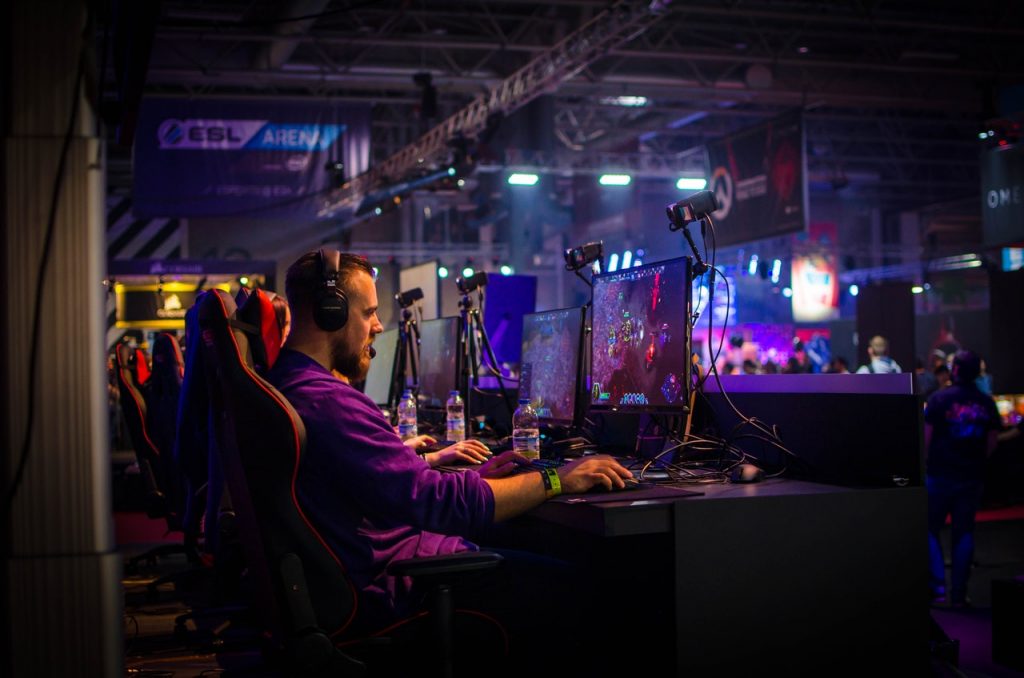VFX has a long and rich history in video games, dating back to the early days of arcade and console gaming. The first video game with VFX was probably Stretch Panic (2001), which featured dynamic lighting on the PlayStation. Since then, VFX has become more advanced and diverse, thanks to the development of new technologies and software. Some of the game-changing VFX innovations since 2000 include ragdoll physics, motion capture, particle systems, real-time ray tracing, and virtual production. These innovations have enabled game developers to create more realistic, immersive, and interactive games across different genres and platforms.
The Benefits And Challenges Of Using VFX In Video Games

VFX (visual effects) are animations that VFX artists design in order to make a game look more realistic and impress players. They can create explosive particle effects, dynamic lighting, or other dramatic effects that enhance the gameplay and the immersion of the player. VFX is not the same as special effects, which are physical effects that happen on set or in real life.
VFX can have a game-changing role in video games, as it can make key moments in the game feel more intense and impactful. They can also help create lifelike actions and effects in-game scenes using graphic tools and specific software. However, using VFX services in video games also comes with some challenges that need to be addressed by game developers and VFX artists.
Benefits Of Using VFX In Video Games
Some of the benefits of using VFX in video games are:
- Visual appeal: VFX can make a game look more attractive and appealing to players, as they can create stunning visuals that capture their attention and imagination.
- Emotional impact: VFX can make a game more engaging and emotional for players, as they can create a mood and atmosphere that affect their feelings and reactions.
- Storytelling: VFX can make a game more immersive and narrative for players, as they can support the story and the characters with visual cues and clues.
- Gameplay: VFX can make a game more fun and interactive for players, as they can provide feedback and rewards for their actions and choices.
Challenges Of Using VFX In Video Games
 Image Source: The New York Times
Image Source: The New York Times
Some of the challenges of using VFX in video games are:
- Performance: VFX can affect the performance of a game, as they require more processing power and memory from the hardware. This can result in lower frame rates, longer loading times, or crashes.
- Compatibility: VFX can cause compatibility issues with different platforms or devices, as they may not work well or look consistent across different systems or screens.
- Cost: VFX can increase the cost of developing a game, as they require more time, resources, and expertise from the developers and artists.
- Quality: VFX can compromise the quality of a game if they are not done well or appropriately. They may look unrealistic, outdated, or distracting if they do not match the style, genre, or expectations of the players.
Recommendations On How To Solve These Challenges
Some of the recommendations on how to solve these challenges are:
- Optimize: Optimize your code and assets to reduce the load and improve the performance of your game. Use techniques such as LOD (level of detail), culling, baking, or compression to optimize your graphics and animations.
- Test: Test your game on different platforms and devices to ensure compatibility and consistency. Use tools such as Unity, Unreal Engine, or Lumberyard to test your cross-platform functionality.
- Budget: Budget your time, resources, and money wisely to balance cost and quality. Use tools such as Maya, Houdini, or Blender to create high-quality VFX at low cost.
- Design: Design your VFX according to your vision, style, genre, and audience. Use tools such as Photoshop, After Effects, or Nuke to design appealing and appropriate VFX for your game.
The Current Trends And Innovations In VFX And Video Games
VFX (visual effects) and video games are two industries that are constantly evolving and innovating with new technologies, tools, and techniques. In this blog post, we will explore some of the current trends and innovations that are shaping these industries.
Virtual Production
Virtual production is a process that combines real-time visuals generated by game engines with live-action filming. This allows filmmakers to create immersive environments, realistic characters, and interactive scenes without relying on green screens or post-production. Virtual production can also save time, money, and resources by reducing reshoots, enhancing collaboration, and improving creative control.
Some examples of virtual production include:
- The Mandalorian: The hit Disney+ series used a massive LED wall powered by Unreal Engine to create photorealistic backgrounds for its intergalactic adventures.
- The Lion King: The remake of the classic animated film used VR headsets and motion capture suits to allow director Jon Favreau and his crew to explore and manipulate the virtual world of the African savanna.
- Ready Player One: The sci-fi blockbuster used virtual cameras and performance capture to blend live-action actors with CG avatars in a dystopian VR game.
Augmented Reality And Virtual Reality
Augmented reality (AR) and virtual reality (VR) are technologies that create immersive experiences by overlaying digital elements onto physical reality or transporting users into simulated worlds. AR and VR can enhance entertainment, education, training, and more by providing interactive, engaging, and realistic content.
Some examples of AR and VR applications include:
- Pokemon Go: The popular mobile game used AR to let players catch and battle virtual creatures in real-world locations.
- Half-Life: Alyx: The critically acclaimed PC game used VR to deliver an immersive first-person shooter experience set in a dystopian future.
- The Lion King: Protect the Pride: The social impact campaign used VR to raise awareness about lion conservation by letting users witness the plight of the endangered species.
VFX (visual effects) and video games are two industries that are constantly evolving and innovating with new technologies, tools, and techniques.
The Future Prospects And Implications Of VFX For The Video Game Industry
VFX (visual effects) are animations that VFX artists design in order to make a game look more realistic and impress players. They can create explosive particle effects, dynamic lighting, or other dramatic effects that enhance the gameplay and the immersion of the player. VFX are not only used for aesthetic purposes, but also for storytelling, gameplay, and emotional impact.
The future prospects and implications of VFX for the video game industry are promising and exciting, as new technologies, tools, and techniques are emerging and evolving to overcome these challenges and create new opportunities.
Future Prospects Of VFX For The Video Game Industry
Some of the future prospects of VFX for the video game industry are:
- Cloud-based VFX: Cloud-based VFX can reduce the load on hardware devices by processing graphics and animations on remote servers. This can improve performance, compatibility, and cost efficiency.
- AI-based VFX: AI-based VFX can automate or enhance some aspects of VFX creation, such as generating realistic textures, lighting, or physics. This can save time, resources, and expertise.
- Immersive technologies: Immersive technologies such as AR (augmented reality) and VR (virtual reality) can create more immersive experiences by overlaying digital elements onto physical reality or transporting users into simulated worlds. This can increase engagement, emotion, and interactivity.
Implications Of VFX For The Video Game Industry
Some of the implications of VFX for the video game industry are:
- Increased demand: The demand for high-quality content by consumers will increase as they expect more realistic and impressive visuals from games. This will require more investment in VFX software and hardware by game developers.
- Increased competition: The competition among game developers will increase as they try to differentiate themselves with innovative and unique visuals from games. This will require more creativity and skill from VFX artists.
- Increased impact: The impact of games on society will increase as they become more immersive and emotional with visuals from games. This will require more responsibility and ethics from game developers.
Conclusion
VFX (visual effects) have become an integral part of the video game industry, as they can make games more attractive, engaging, immersive, and fun for players. However, VFX also poses some challenges for game developers and artists. The future prospects and implications of VFX for the video game industry are promising and exciting, as new technologies, tools, and techniques are emerging and evolving to overcome these challenges and create new opportunities.
RELATED: Movies & Gaming: The Merging Of Entertainment Industries










